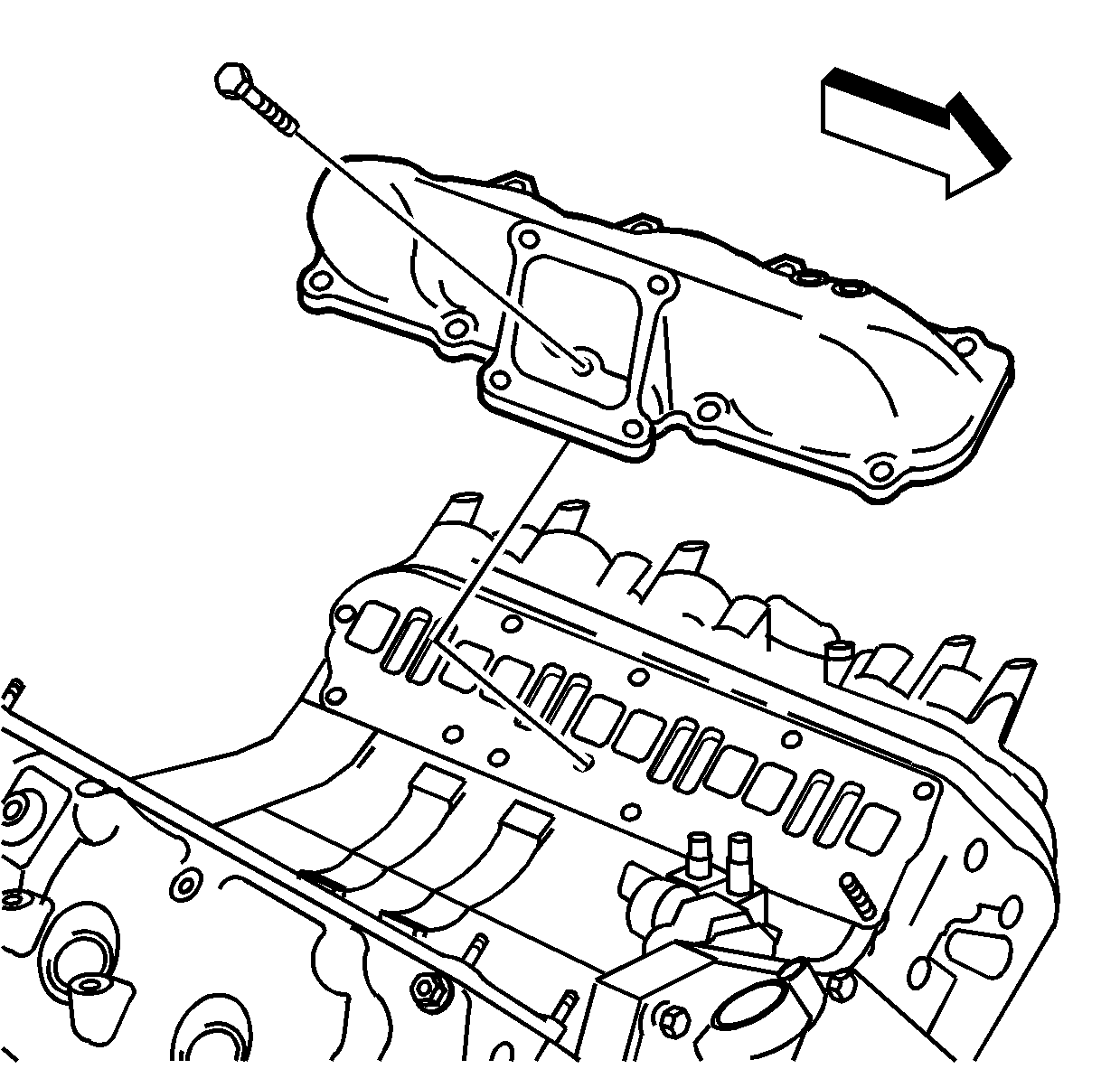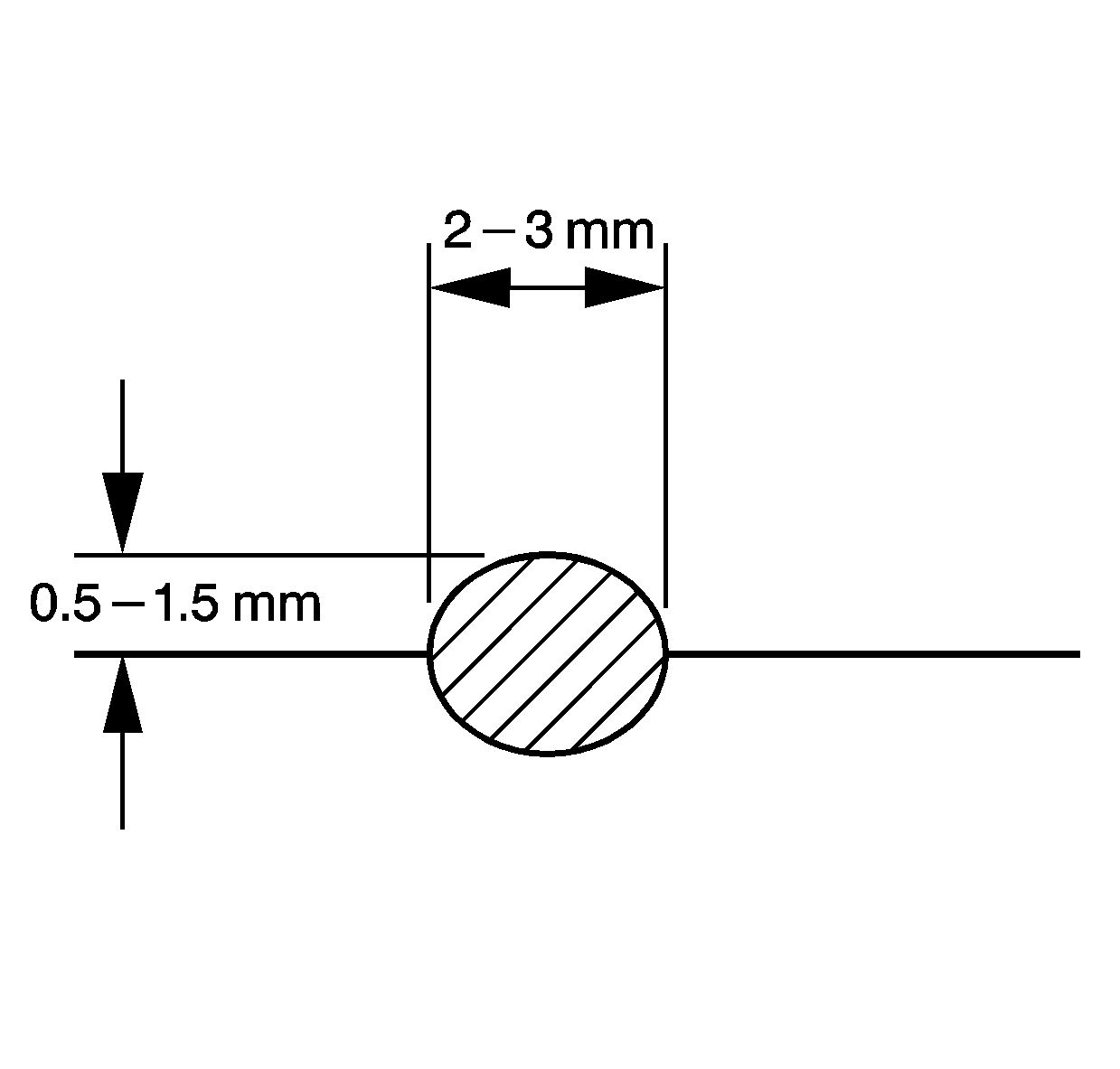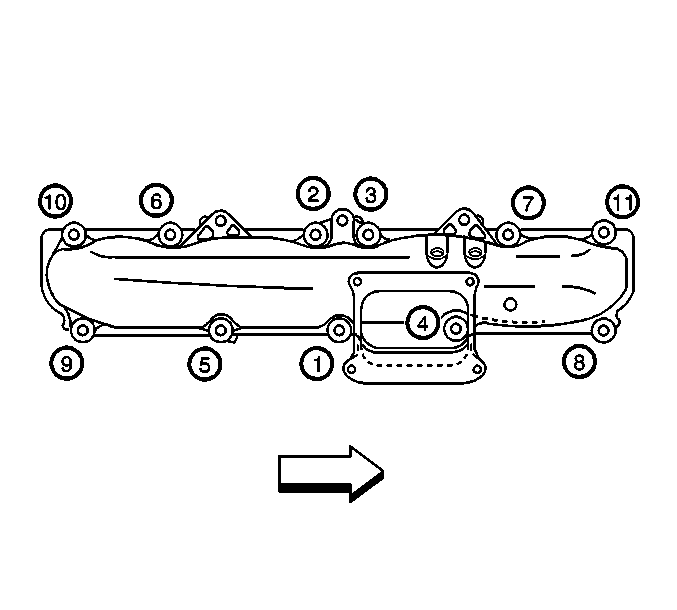Removal Procedure
- Remove the turbocharger. Refer to Turbocharger Replacement .
- Remove the left fuel rail. Refer to Fuel Injection Fuel Rail Assembly Replacement - Bank 2 in Engine Controls - 6.6 L.
- Remove the intake manifold tube. Refer to Intake Manifold Tube Replacement .
- Remove the intake manifold bolts/nuts.
- Remove the intake manifold.
- To prevent entry of debris into the cylinder head, tape the openings.
- If required, clean and inspect the intake manifold. Refer to Intake Manifold Cleaning and Inspection .

Important: The intake manifold uses sealer. Pry at the area by the fuel rail bolt holes in order to avoid damage to the sealing surface.
Installation Procedure
- Apply a 2-3 mm (1/8 in) wide, by 0.5-1.5 mm (1/16 in) high bead of sealant, GM P/N 97720043 (Canadian P/N 88901148), or equivalent to the intake manifold.
- Install the intake manifold.
- Install the intake manifold bolts/nuts.
- Tighten the intake manifold bolts/nuts in the sequence shown.
- Install the intake manifold tube. Refer to Intake Manifold Tube Replacement .
- Install the left fuel rail. Refer to Fuel Injection Fuel Rail Assembly Replacement - Bank 2 in Engine Controls - 6.6 L.
- Install the turbocharger. Refer to Turbocharger Replacement .



Notice: Use the correct fastener in the correct location. Replacement fasteners must be the correct part number for that application. Fasteners requiring replacement or fasteners requiring the use of thread locking compound or sealant are identified in the service procedure. Do not use paints, lubricants, or corrosion inhibitors on fasteners or fastener joint surfaces unless specified. These coatings affect fastener torque and joint clamping force and may damage the fastener. Use the correct tightening sequence and specifications when installing fasteners in order to avoid damage to parts and systems.
Tighten
Tighten the bolts/nuts to 21 N·m (15 lb ft).
